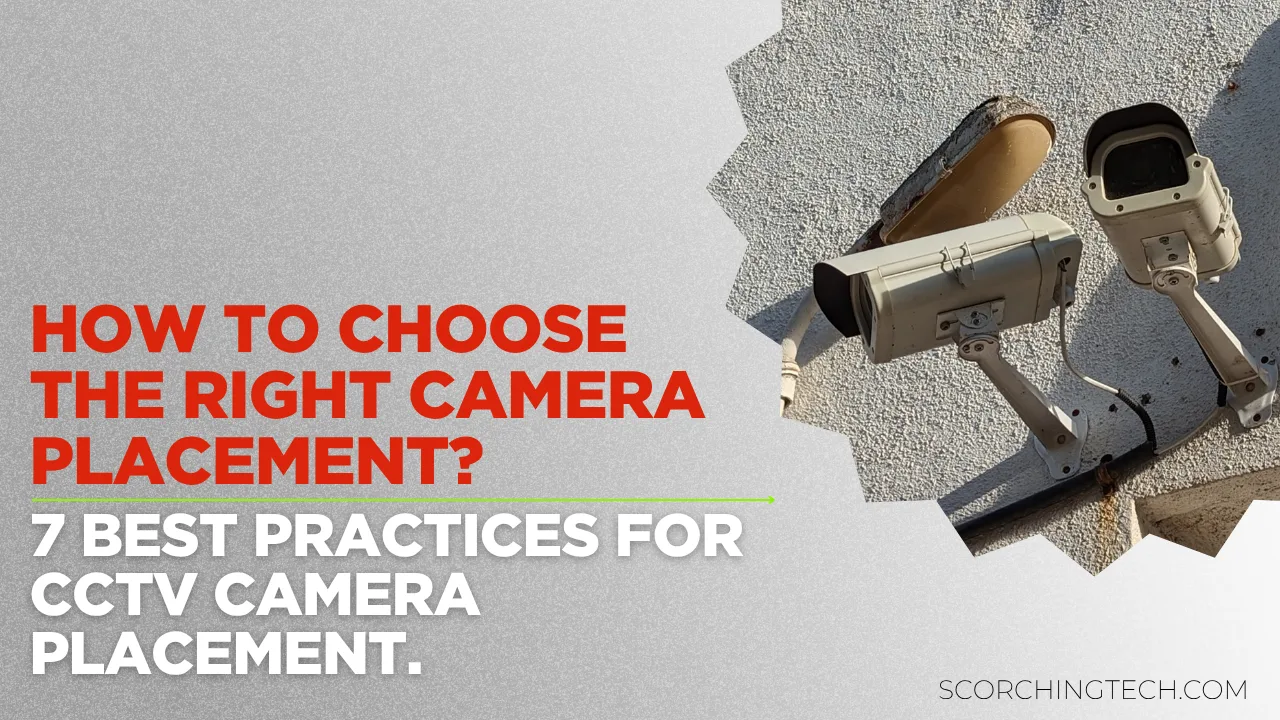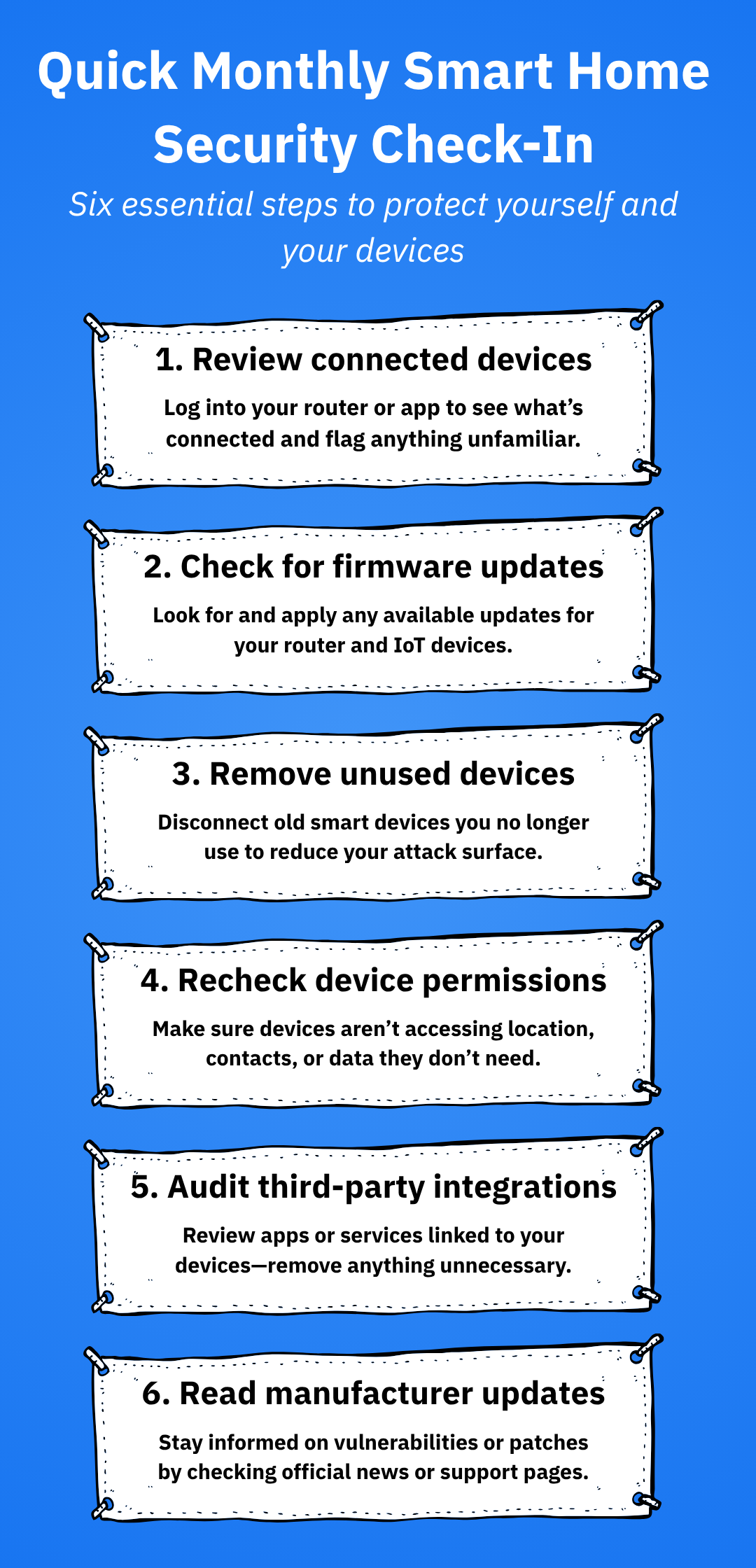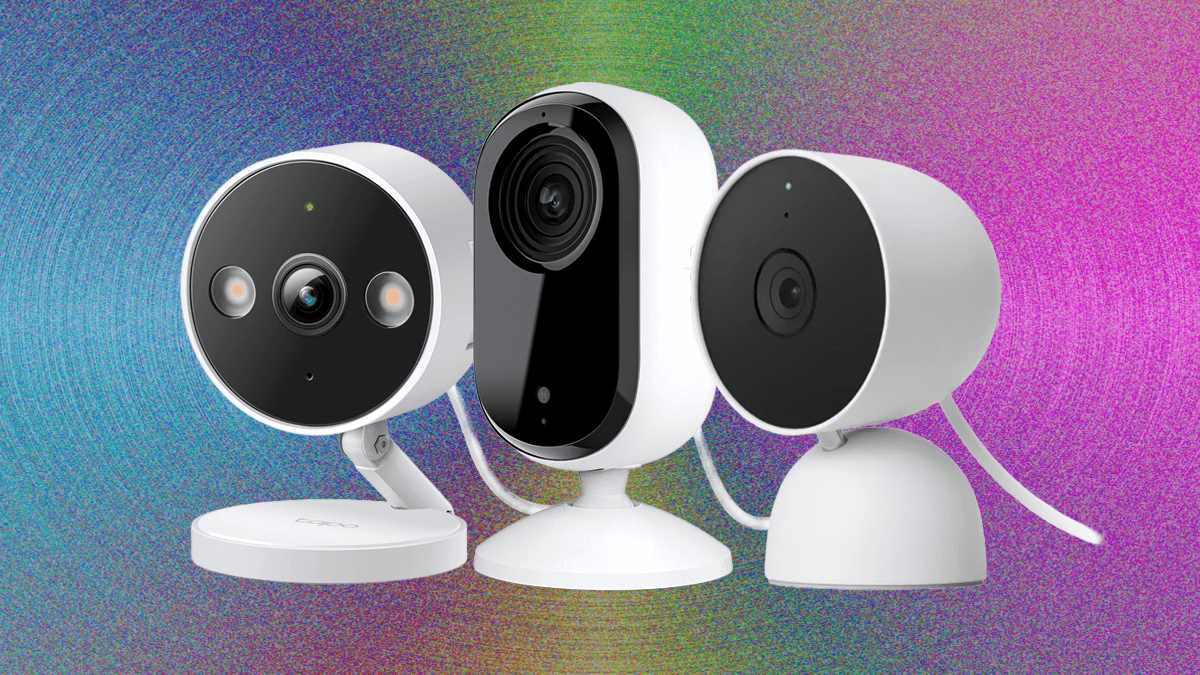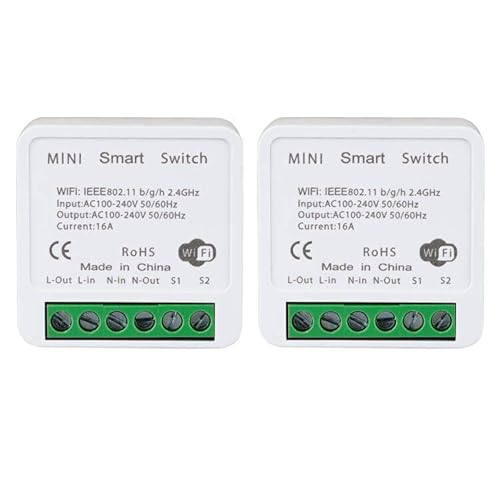When it comes to protecting your home or business, where you place your security cameras can make all the difference. You want to catch every important detail without leaving blind spots.
But how do you decide the best spots to install them? This guide will help you understand exactly where to put your cameras for maximum coverage and peace of mind. By the end, you’ll feel confident that your property is truly secure.
Keep reading to discover the smart tricks that experts use to make security cameras work for you.

Credit: www.reddit.com
Choosing The Right Camera Types
Choosing the right security camera helps protect your home or business. Different camera types fit different needs and places.
Learn about camera styles to find the best option for your security setup. This guide covers popular camera types and their uses.
Bullet Vs Dome Cameras
Bullet cameras are long and cylindrical. They show where they point and can deter intruders.
Dome cameras are round and blend into the ceiling. They are less noticeable and offer a wider view.
- Bullet cameras are easy to aim at specific spots
- Dome cameras work well for wide coverage areas
- Bullet cameras often handle outdoor weather better
- Dome cameras resist tampering and vandalism
Indoor And Outdoor Options
Indoor cameras focus on rooms and hallways. They do not need to resist weather.
Outdoor cameras must handle rain, wind, and dust. They need strong casing and weatherproof features.
- Indoor cameras are smaller and less rugged
- Outdoor cameras have waterproof and dustproof ratings
- Some cameras work both indoors and outdoors
Wireless And Wired Systems
Wired cameras connect with cables to power and recording devices. They offer steady connections.
Wireless cameras use Wi-Fi or other signals. They are easier to move but may lose signal sometimes.
- Wired systems need professional installation
- Wireless systems are simpler to install and adjust
- Wired cameras usually have no signal interruptions
- Wireless cameras depend on strong Wi-Fi signals
Key Areas To Cover
Placing security cameras in the right spots helps keep your property safe. You need to cover places where people often enter or move around.
Focus on areas where intruders might try to get in or where valuables are kept. Good camera placement helps catch important details.
Entrances And Exits
Entrances and exits are the most common points for entering a property. Cameras here capture faces and actions clearly.
Place cameras above doors to get a wide view of people coming and going. Make sure the area is well-lit for clear footage.
Driveways And Garages
Driveways and garages store vehicles and tools. These areas are often targeted for theft or vandalism.
Install cameras to cover the full driveway and garage doors. This helps watch for any suspicious vehicles or people.
- Point cameras towards the driveway entrance
- Cover garage doors and side access points
- Use motion detection to alert activity
Backyards And Side Paths
Backyards and side paths are less visible from the street. These areas need cameras to prevent hidden access.
Place cameras to watch gates, fences, and windows that face these spots. This keeps unwanted visitors away.
- Cover backyard entrances and garden areas
- Monitor side paths leading to the back
- Check for low lighting and add lights if needed
High Traffic Indoor Zones
Inside your home or building, watch areas where many people pass through. These include halls and main rooms.
Place cameras in spots that cover entrances and common spaces. This helps track movement and catch unusual activity.
- Monitor main hallways and stairways
- Cover living rooms or office reception areas
- Keep cameras out of direct sight for privacy
Optimal Camera Height And Angle
Placing security cameras correctly helps capture clear footage. The right height and angle improve coverage and detail.
Good camera placement stops blind spots and adjusts for light changes. This keeps your space safe day and night.
Ideal Mounting Heights
Mount cameras high enough to avoid tampering but low enough to see faces. Around 8 to 10 feet is best for most cameras.
This height helps capture clear images and wide views. Avoid placing cameras too low or too high.
- 8-10 feet for outdoor cameras
- 7-9 feet for indoor cameras
- Adjust height based on camera lens type
Avoiding Blind Spots
Blind spots let intruders hide from cameras. Plan camera placement to cover entrances, corners, and dark areas.
Use overlapping angles and multiple cameras to watch all areas. Check views regularly to spot any gaps.
- Place cameras at corners to cover wide areas
- Use more than one camera for large spaces
- Test camera views during setup
Adjusting For Lighting Conditions
Bright light or shadows can reduce camera image quality. Point cameras away from direct light sources.
Use cameras with night vision for dark areas. Adjust angles to avoid glare and improve image clarity.
- Place cameras to avoid facing the sun
- Use infrared cameras for low light
- Check footage at different times of day

Credit: www.equidiversity.org
Lighting And Environmental Factors
Good lighting is key for security cameras to work well. Cameras need enough light to capture clear images. Outside lights and natural light affect camera quality.
Environmental factors like weather and temperature can also impact cameras. These factors affect where and how you place your security cameras.
Dealing With Shadows And Glare
Shadows can hide important details in videos. Glare from the sun or lights can blur the image. Avoid placing cameras where bright light shines directly into the lens.
Try to place cameras in shaded areas or use shades to block light. Adjust the camera angle to reduce glare and shadows.
- Place cameras away from direct sunlight
- Use wide-angle lenses to minimize shadows
- Install shades or covers if needed
- Avoid pointing cameras at reflective surfaces
Night Vision And Infrared Placement
Night vision cameras use infrared light to see in the dark. Place these cameras where the infrared light can cover the area well. Avoid obstacles that block the infrared light.
Make sure no objects are too close to the camera lens. Close objects can cause glare from infrared light, making the image unclear.
- Keep camera lenses clean for clear images
- Place cameras at a height to cover wide areas
- Test night vision in low light before final installation
- Avoid placing cameras near strong light sources
Weatherproofing Cameras
Cameras outside need protection from rain, dust, and extreme temperatures. Use weatherproof cameras designed for outdoor use. Protect cables and connections from water damage.
Check the camera’s IP rating to know its resistance level. Higher IP ratings mean better protection against dust and water.
- Use weatherproof housings for extra protection
- Seal all cable openings to prevent water entry
- Mount cameras under eaves or roofs if possible
- Regularly inspect cameras for damage or wear
Preventing Tampering And Vandalism
Security cameras must be placed to avoid tampering and vandalism. Proper placement helps keep cameras safe and working well.
Good camera placement also makes it harder for thieves to damage or disable them.
Hidden And Discreet Placement
Placing cameras out of sight lowers the chance of damage. Hidden cameras are less likely to be noticed and targeted.
Discreet placement blends cameras with their surroundings. This stops people from seeing and tampering with them easily.
- Use natural covers like trees or bushes
- Mount cameras near building corners or under eaves
- Choose small or camouflaged camera models
- Avoid placing cameras in obvious spots
Using Protective Housings
Protective housings shield cameras from attacks and weather. They make cameras harder to break or spray paint.
Housings are made from strong materials like metal or tough plastic. Some have features to stop tampering.
- Use vandal-proof housings with thick covers
- Choose weather-resistant cases for outdoor cameras
- Pick housings with locks to prevent opening
- Look for models that resist impacts and scratches
Secure Mounting Techniques
Mount cameras firmly to stop removal or damage. Weak mounts allow easy tampering or theft.
Use strong screws and secure fasteners. Mount in places that are hard to reach without tools.
- Fasten cameras with tamper-proof screws
- Place mounts on solid walls or poles
- Use lockable brackets or enclosures
- Keep wiring hidden to avoid cutting or unplugging
Maximizing Coverage With Multiple Cameras
Using several security cameras helps cover more area. It reduces blind spots and improves safety.
Proper placement of multiple cameras ensures full monitoring of your property. Planning is key to get the best results.
Overlapping Fields Of View
Overlapping camera views create a safety net. If one camera misses an event, another can catch it.
This overlap also helps identify details from different angles. It improves the chance of clear images.
- Place cameras so their views cross slightly
- Avoid gaps between camera coverage areas
- Use overlap to track moving objects smoothly
Balancing Quantity And Quality
More cameras do not always mean better security. Focus on camera quality as well as number.
High-quality cameras provide clearer images and work better in low light. Balance your budget to buy enough good cameras.
- Choose cameras with good resolution
- Use fewer cameras with high-quality lenses
- Avoid many low-quality cameras that miss details
Integrating With Alarm Systems
Linking cameras to alarms improves security response. Cameras can trigger alerts when they detect motion or sound.
This integration helps notify you fast and shows real-time footage of events. It supports quick decision-making.
- Set cameras to start recording when alarms activate
- Receive alerts with camera snapshots or video clips
- Combine cameras and alarms for better monitoring
Legal And Privacy Considerations
Placing security cameras requires care about laws and privacy. Cameras protect property but must respect others’ rights.
Understanding legal rules helps avoid fines and disputes. Knowing privacy limits keeps your setup fair and safe.
Avoiding Neighboring Property Surveillance
Do not point cameras at neighbors’ homes or yards. Watching private spaces can invade privacy and cause conflicts.
Focus cameras only on your property and public areas. This shows respect and follows privacy guidelines.
- Adjust camera angle to avoid neighbor’s property
- Use physical barriers to block views
- Check footage regularly to ensure privacy
Complying With Local Laws
Different places have different laws about security cameras. Learn your local rules before installation.
Some areas require permits or restrict where cameras can point. Following these laws prevents legal trouble.
- Research local government or council regulations
- Check rules about audio recording if cameras have microphones
- Keep cameras in public or your private property zones
Signage And Notification
Inform visitors and passersby that cameras are in use. Clear signs help people know they are being recorded.
Signage shows transparency and may be required by law. Place signs where they are easy to see.
- Use simple, visible camera warning signs
- Place signs at main entrances and common areas
- Update signs if camera locations change

Credit: www.securitycameraking.com
Frequently Asked Questions
Where Should I Place Security Cameras For Best Coverage?
Place security cameras at entry points, driveways, and blind spots. Ensure wide-angle views cover high-traffic areas. Mount cameras high enough to avoid tampering but angled to capture faces clearly. Proper placement maximizes surveillance and deters intruders effectively.
How High Should Security Cameras Be Installed?
Install security cameras between 8 to 10 feet high. This height prevents easy tampering and vandalism. It also captures clear footage of faces and activities. Avoid placing cameras too high, which can reduce image clarity and detail.
Can I Install Security Cameras Indoors And Outdoors?
Yes, install security cameras both indoors and outdoors. Use weatherproof cameras for outdoor areas to withstand elements. Indoor cameras monitor internal activity and protect valuables. Combining both enhances overall security coverage and threat detection.
What Areas Are Most Important For Security Camera Placement?
Focus on entrances, exits, driveways, garages, and backyards. These areas are common targets for intruders. Also, cover stairways and hallways inside the home. Prioritizing these spots improves safety and early threat identification.
Conclusion
Proper security camera placement boosts your home’s safety. It deters potential threats effectively. Begin by covering all entry points. Doors, windows, and driveways are crucial spots. Use cameras with wide angles for better coverage. Keep cameras visible to deter intruders.
Also, think about lighting conditions. Cameras should work well at night. Regularly check and maintain your cameras. This ensures they function correctly. It’s vital for your peace of mind. With thoughtful planning, your home remains secure. Remember, placement matters. Make informed choices for optimal security.
Your safety is worth it.
20 min read








